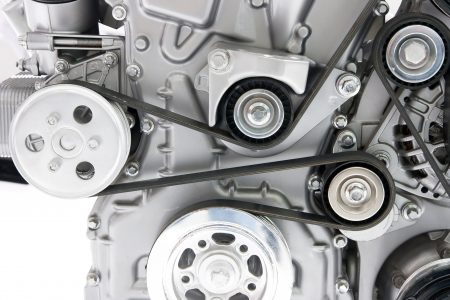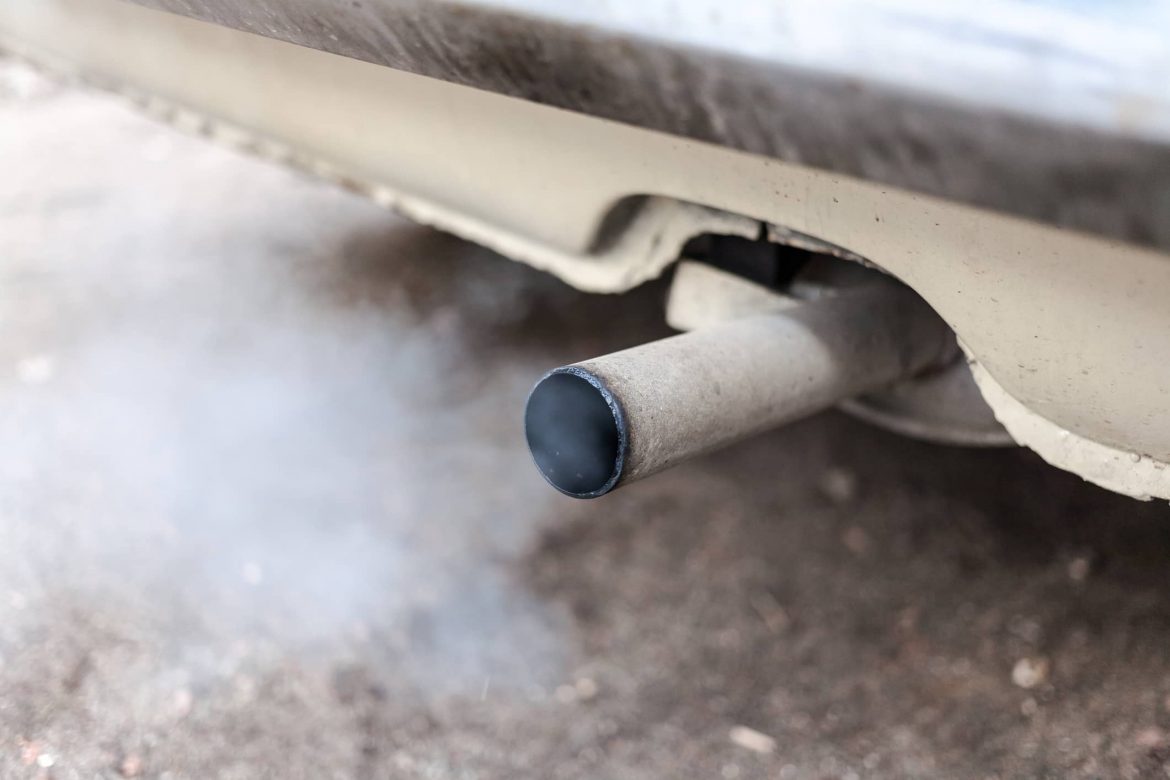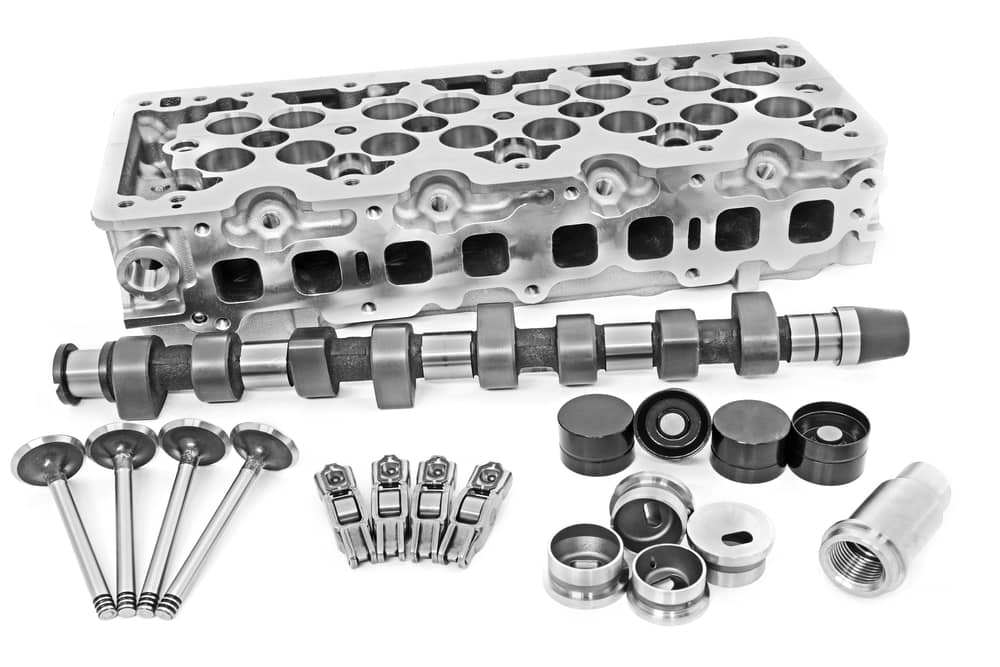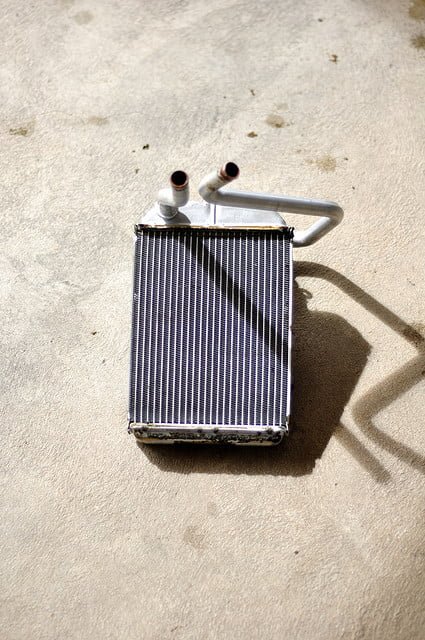 Just about every vehicle on the road today has a power steering pumps. There are still a few vehicles left over from the 70s and 80s that may still have manual steering racks. There also may be a few very new vehicles on the road that have started to take advantage of electric power steer. For the rest of us, hydraulic power steering systems are what help us drive our cars more easily.
Just about every vehicle on the road today has a power steering pumps. There are still a few vehicles left over from the 70s and 80s that may still have manual steering racks. There also may be a few very new vehicles on the road that have started to take advantage of electric power steer. For the rest of us, hydraulic power steering systems are what help us drive our cars more easily.
What is a Power Steering Pump?
Power steering systems are relatively simple systems and surprisingly enough, they are one of the few systems that are extremely similar from vehicle to vehicle, regardless of the make or manufacturer. The main difference in power steering systems is whether your vehicle uses a rack and pinion to turn the wheels or a steering gear and drag link setup. Usually older vehicles and larger trucks will utilize a steering gear which is simply a gearbox that turns the rotary motion of your steering wheel into linear motion of a swinging arm. Most small cars and newer vehicles utilize a rack and pinion to accomplish the same task. The rack and pinion is usually mounted under your engine either just in front of, or just behind your front axles.
Whether your vehicle has rack and pinion or steering gear, the assistance to the driver is provided by hydraulic pressure. This hydraulic pressure aids in moving the wheels when the driver turns the steering wheel. The hydraulic pressure is guided through a series of passages to assist in moving the pitman arm or tie rods. This hydraulic pressure is provided by your power steering pump. The power steering pump on most vehicles is attached to the motor and driven by a belt connected to the engine’s crankshaft. You can identify the power steering pump usually by its large pulley. The pulley will likely be 4” to 6” in diameter and the pump should have 2 hoses attached to it. The power steering pump fluid reservoir will either be integral to the pump, or close by attached by a hose.
Do I Need to Replace My Power Steering Pump?
If you’re asking about power steering pump cost, then you’ve most likely identified a problem with yours. Usually, power steering pump problems manifest themselves in the form of a whining or whirring noise that changes with engine RPM but not vehicle speed. Before you spend the money on a new power steering pump, we recommend doing a few other checks first to make sure that you actually need a new pump. Power steering pumps are relatively robust, so they are hard to damage even if they are run dry for a long time.
Start by doing a little research on your vehicle. Some late model cars and trucks are known to have noisy power steering pumps and owners can get 10s of thousands of miles out of these power steering pumps before they fail. A little research might show you’ve got one of these vehicles and you don’t need a new power steering pump just yet.
Next, you can try removing the engine belt and inspecting the pump and pulley. Check for leaks around the pulley where the shaft goes into the actual pump. You can also grab ahold of the pulley and try spinning it by hand. It should spin with a little resistance, but not feel lumpy or like it binds anywhere in its rotation. Also, the pulley should not wobble at all. Any of these symptoms in your pump would indicate bad pump bearings and would require replacement of your pump. If this is the case, the best way to find the best price on a pump is to call all of your area auto parts suppliers and ask for pricing. You can start by calling the list of auto parts stores below.
Lastly, you can check the fluid level and condition. Worn or dirty power steering fluid can lose its fluid characteristics making it a poor lubricant and can cause noise. Also, if the fluid is foamy, it can indicate a leak on the low-pressure side of the system allowing air to enter the fluid and cause noise as well.
Lastly, a low power steering fluid level can often cause your pump to whine as it allows air to enter the fluid and as the pump intermittently runs dry. A low power steering fluid level always indicates a leak somewhere in your system. If you didn’t find a leak when you were inspecting your power steering pump, check the hoses and the rack or steering gear. If you find a leaking hose you can simply replace that hose. If you find a leak in your rack or steering gear, use BlueDevil Power Steering Stop leak to seal the leak and get things back to normal.
For more information about BlueDevil Power Steering Stop Leak, click on the banner below.
You can purchase BlueDevil Power Steering Stop Leak at any of our partnering local auto parts stores like:
- AutoZone
- Advance Auto Parts
- Bennett Auto Supply
- CarQuest Auto parts
- NAPA Auto Parts
- O’Reilly Auto Parts
- Pep Boys
- Fast Track
- Bumper to Bumper Auto Parts Specialists
- S&E Quick Lube Distributer
- DYK Automotive
Pictures Provided By:
power_steering_pump.jpg – By Huad626 – Licensed by Thinkstock Photos – Original Link
BlueDevil Products can be found on Amazon.com or at AutoZone, Advance Auto Parts, O’Reilly Auto Parts, NAPA, and other major auto parts retailers.
2 responses to "What Should a Power Steering Pump Cost?"
2 Comments
Leave a Reply
Related Articles




Two weeks ago, i had to have my power steering pump and universal belt replaced. TIRE DISCOUNTERS told me the pump was shot and had torn up the belt. ( at a cost of $429.00). Not two weeks later, and less than 100 miles, I have a leak again. I took it back and they now tell me the rack needs to be replaced. Should they have not seen the leak or wear on the rack then. Now they want $710.00 for the new job. Are they taking advantage of a divorced woman. Will your blue devil stuff work on this. I will sing your praises forever and to all if it will !
Christine-
Thank you for your interest in the product. It is tough to say what happened in your experience, whether the rack needed replacement the first time your brought your vehicle in or not. As long as you are not losing power steering fluid too quickly, you would be a good candidate for the BlueDevil Power Steering Stop Leak. Typically, you will start to notice improvement after about 100-200 miles of driving.
Thank you!
-BDP